Last September, Stuart Lashley explained the work of Double Negative on BABY DRIVER. He totally changes of universes today with THOR: RAGNAROK.
How did you and Double Negative get involved on this show?
We came on board pretty late in the post schedule to pick up the Sakaar wasteland and Valkyrie’s apartment scenes. Double Negative has worked with Marvel on a number of projects including THOR: THE DARK WORLD.
How was the collaboration with director Taika Waititi and VFX Supervisor Jake Morrison?
Both Taika and Jake were great to work with. We had more regular contact with Jake who gave us clear briefs and guidance but was also very open to creative collaboration where it came to the design challenges. Reviews with Taika were both inspiring and entertaining for the team.
What were their approaches and expectations for the visual effects?
The Marvel cinematic world is naturally quite a VFX heavy one and both Taika and Jake had clear ideas as to what they wanted to get from the VFX in this film. In our case it was really about opening up the wasteland environment and being able to sell its vastness and expanse. They were happy for us to contribute ideas to outstanding creative challenges. The whole process was very collaborative.
What are the sequences made at Double Negative?
Double Negative worked on three sequences in the end. The Sakaar wasteland sequence where Thor meets the Scrappers and Val for the first time; Val’s Sakaar apartment sequence where Thor, Val and Banner plan their escape; and finally a small sequence which sees the Grandmaster face-to-face with an angry crowd back in the wasteland.
How did you organize the work at Double Negative?
The work was split between our teams in London and Mumbai.
How did you design and create the wormhole?
After an initial briefing session with Jake we started with some concept designs. There were aspects of natural storm systems that Taika wanted to incorporate while at the same time creating something completely not of this world. We continued to work up the look with FX simulations to sell movement and scale. Digital Domain were also working on shots featuring the wormhole and also working up the design in parallel, so the end result was something of a combined effort.
Can you tell us more about the digital double creation for Thor?
A couple of shots at the very start of the wasteland sequence required a fully digital Thor. Coming on to the project quite late meant we were able to acquire a few assets from Framestore to give us a head start. They were able to send us a complete model for Thor, to which we then added materials, cloth and hair dynamics to work for our particular shots.
Thor finally lands in the wasteland of Sakaar. How did you created this huge environment?
The vastness of the wasteland and the amount of junk scattered around required a certain amount of automation in the way we populated the landscape. We started by laying out the terrain with basic land mass shapes and a representation of the water surface in order to work up the base composition of each shot. There were certain constants that we had to adhere to such as the geometry of the set and the location of the city and wormhole, but outside of that we were generally free to compose the landscape as needed.
We had a library of junk pieces which we could then scatter over the landscape to get our basic look for the junk mounds. It was then a case of dressing in or adjusting individual pieces of junk or making small alterations to the underlying land shapes until we were happy with the landscape.
There are many ships in this sequence. How did you design and create these vehicles?
The design of the vehicles was pretty much in place when we came on board and Framestore had already done some work on the vehicle assets which we continued to work up and adjust for our sequence.
Can you tell us more about Valkyrie ship?
Valkyrie’s ship, called the Warsong, featured heavily in the wasteland sequence. The ship itself has a lot of character and it was important to bring that through in the way it moved and landed. That and the fact that its pilot had had a drink or two meant there we many creative discussions and movement tests done before Taika was happy we had struck the right balance.
Her ship can deploy weapons. How did you create and animate them?
The guns were designed to be able to tuck away and have them drawn almost like a handgun from a holster. They were keyframe animated to match the movements of Val’s arms.
The sequence involves many FX such as destruction and lasers. How did you create these FX elements?
The laser and scrapper destruction FX we’re all done in Houdini. We started by blocking out the general timing of vanishing scrappers and then worked up the layers of the exploding materials and ground hits. The goal was to create a few seconds of chaos as Val dispatches the scrappers.
How did you create the vast city of Sakaar?
We started with a work-in-progress version of the city handed to us from Framestore. We then worked up the look based on the particular views we had. For the most part the city is fairly distant in the sequences we worked on, so the finished version of the city was a combination of lighting, lookdev and matte painting.
How did you populate the city with people and ships?
The city was too distant to require populating with people but we had various ships milling around on animated paths to bring some life to the busy city of Sakaar.
What is your favorite shot or sequence?
The destruction of the scrappers was fun.
What was the main challenge on this show and how did you achieve it?
The main challenge was timescale more than anything else. It meant we had to hit the ground running and nail any creative questions very early on.
What is your best memory on this show?
Taika reviews were certainly memorable!
How long have you worked on this show?
4 months.
What’s the VFX shot count?
Nearly 200.
What was the size of your team?
250 approx.
What is your next project?
BLACK PANTHER.
A big thanks for your time.
// WANT TO KNOW MORE?
Double Negative: Dedicated page about THOR: RAGNAROK on Double Negative website.
© Vincent Frei – The Art of VFX – 2017


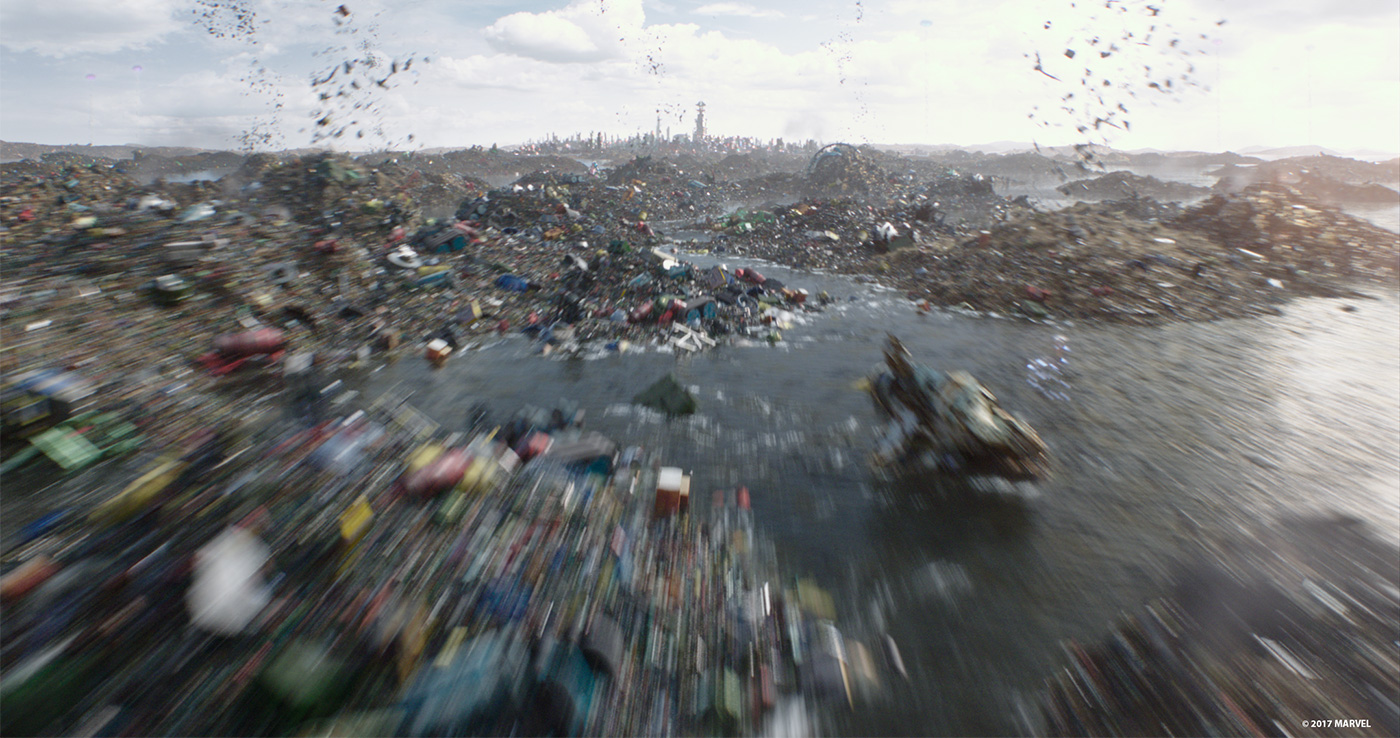

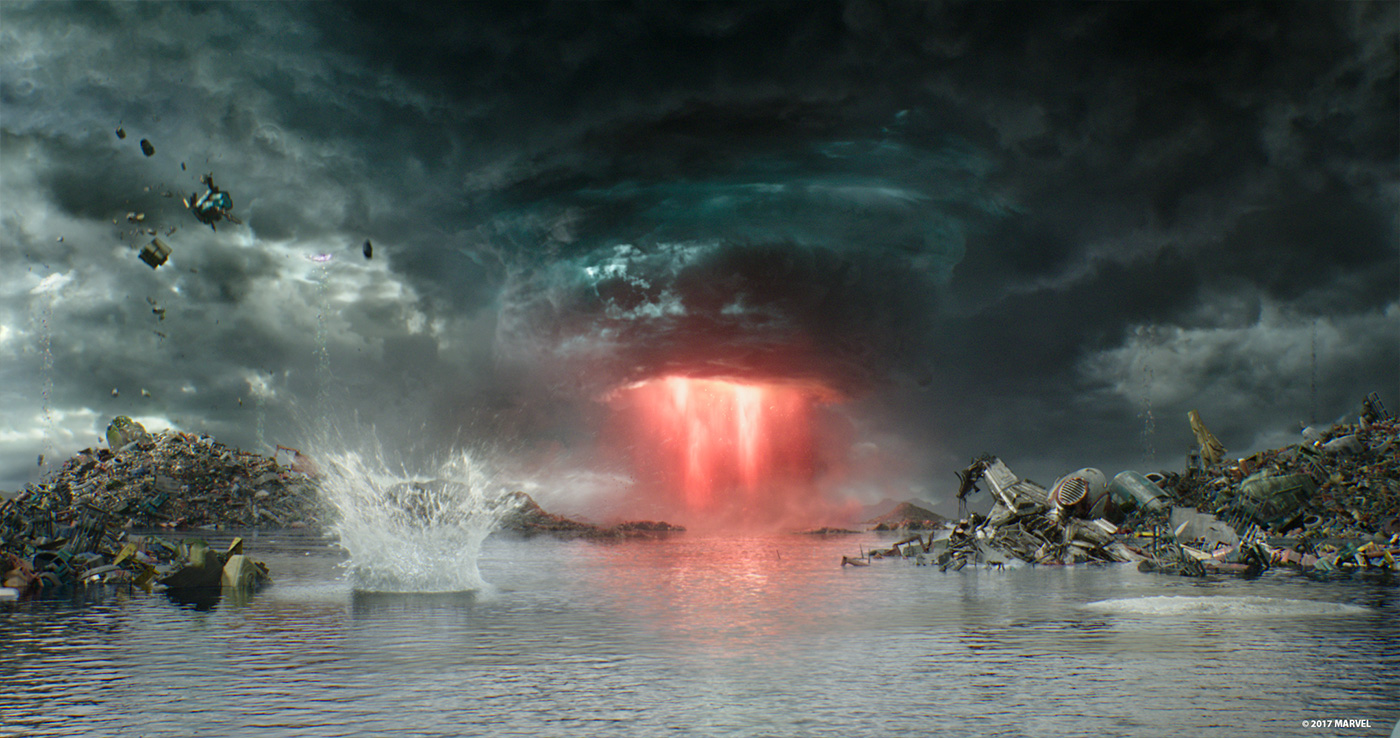
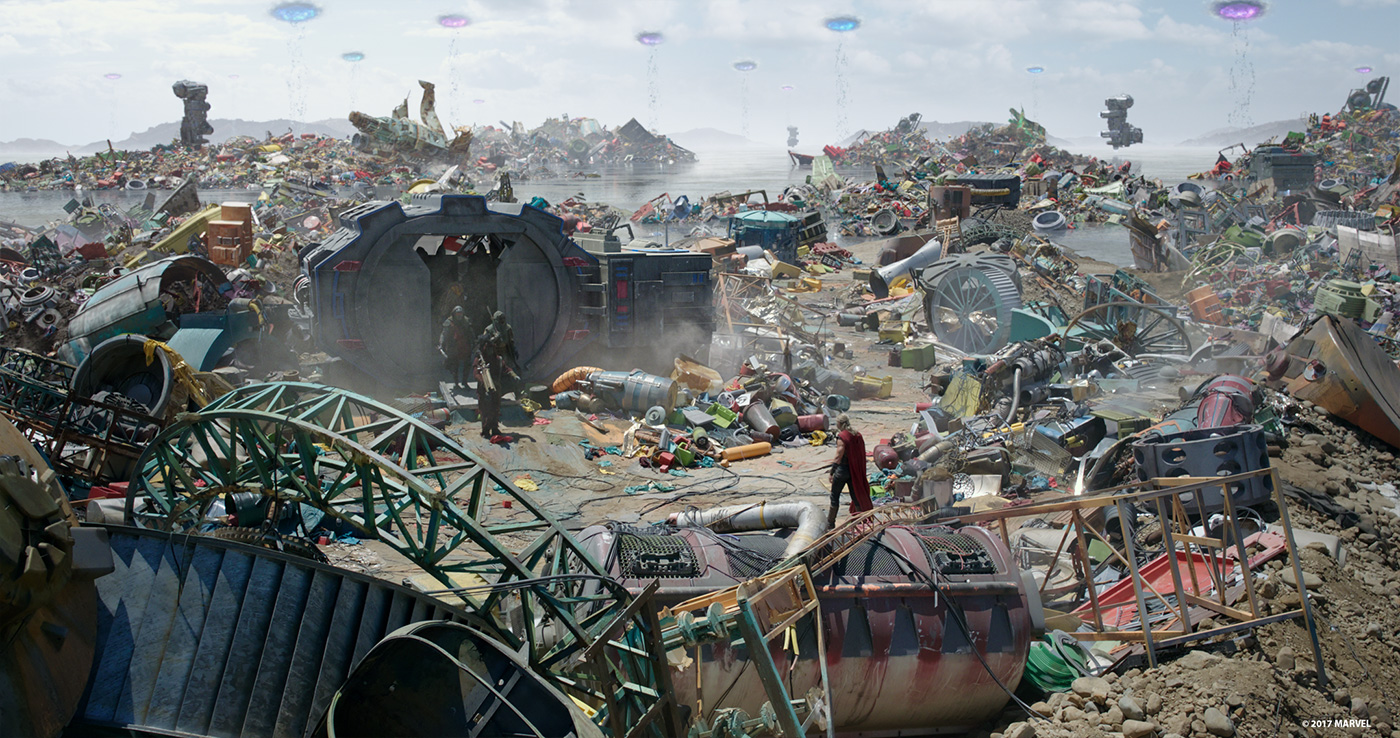
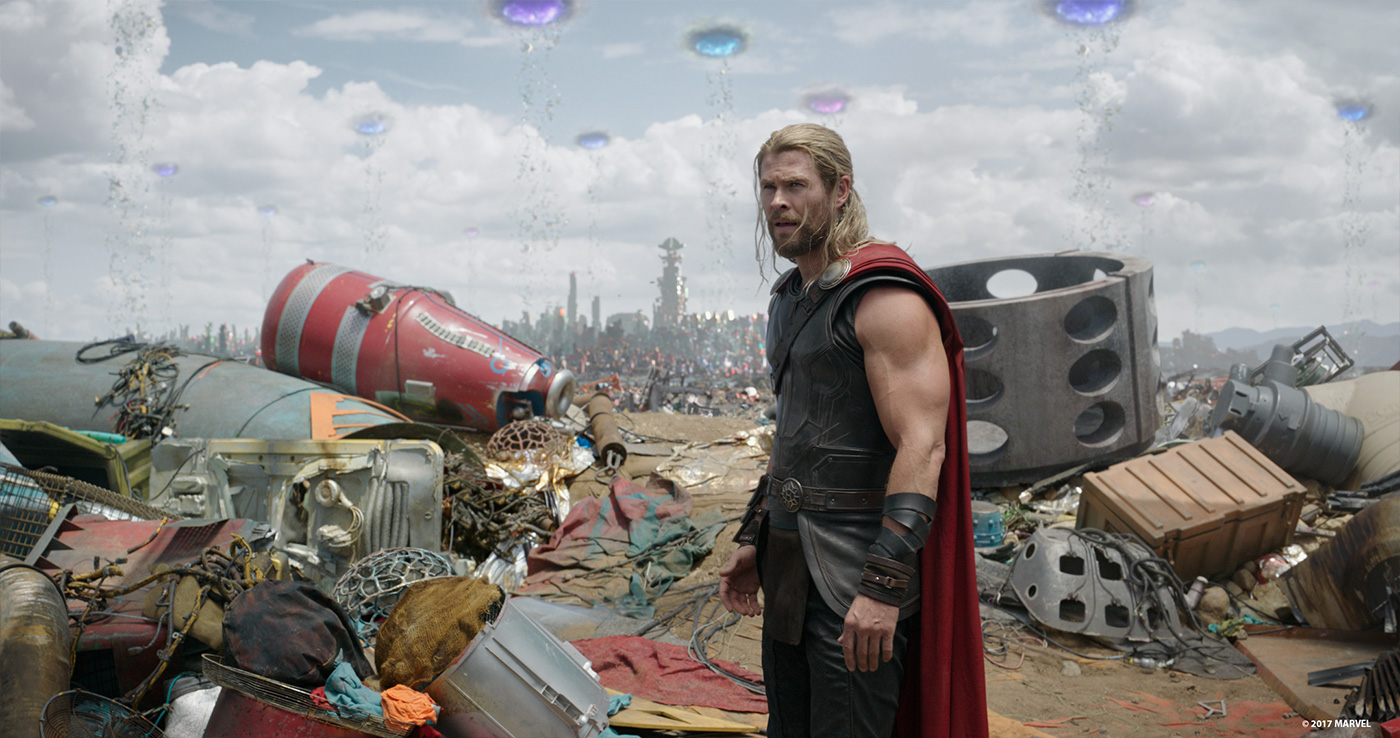
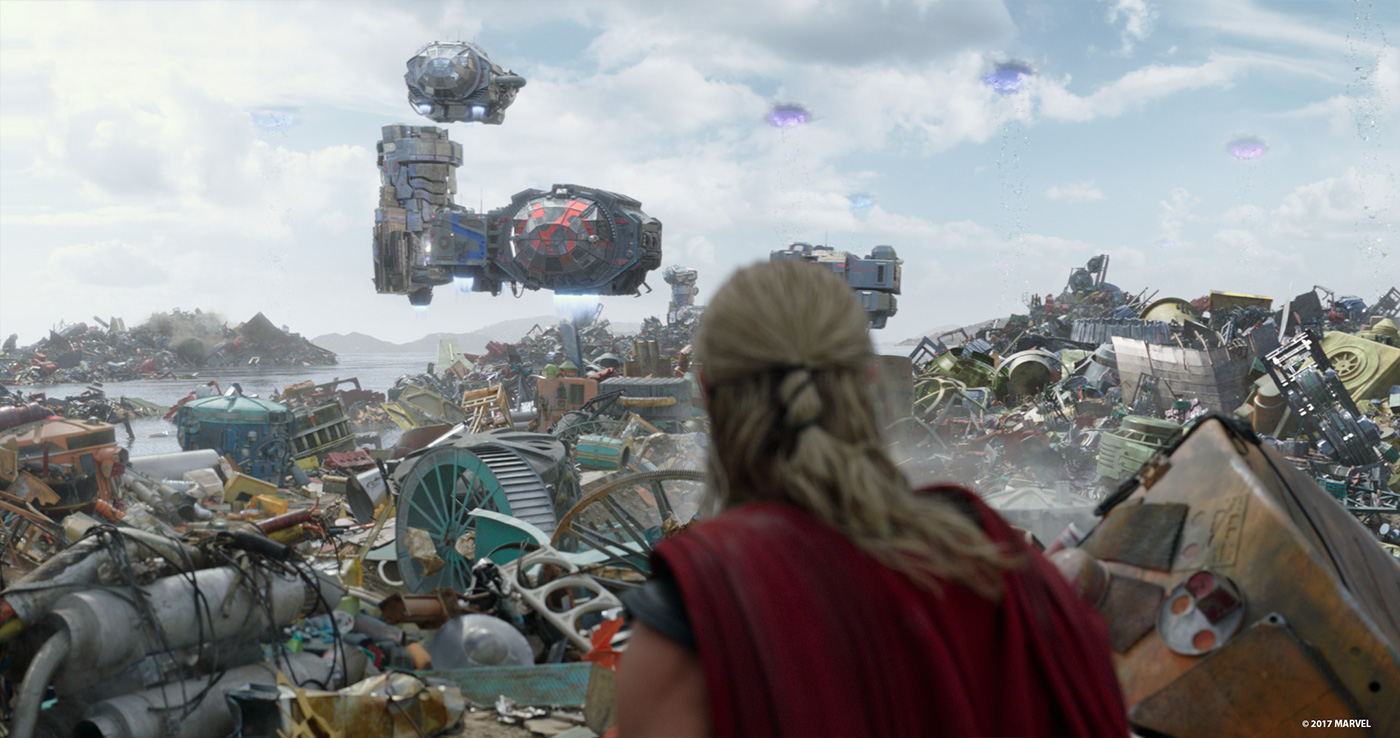
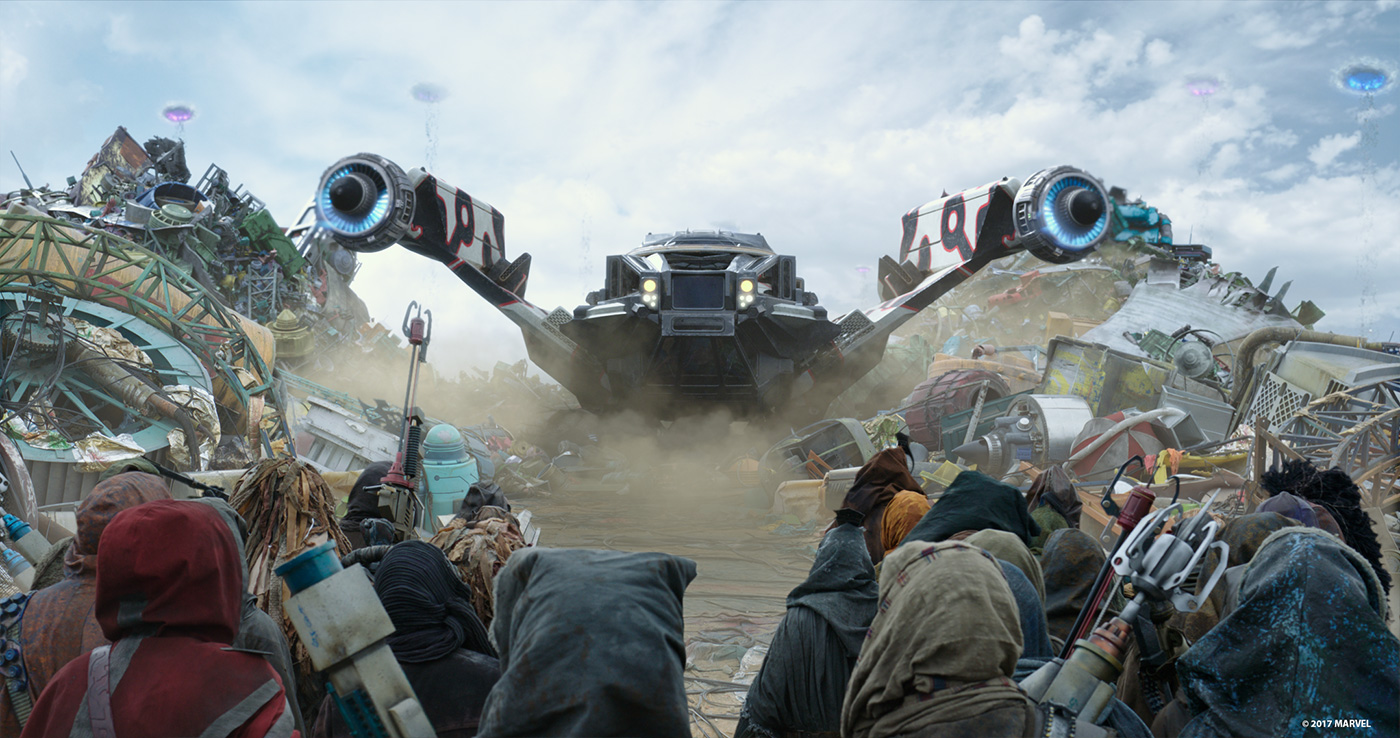
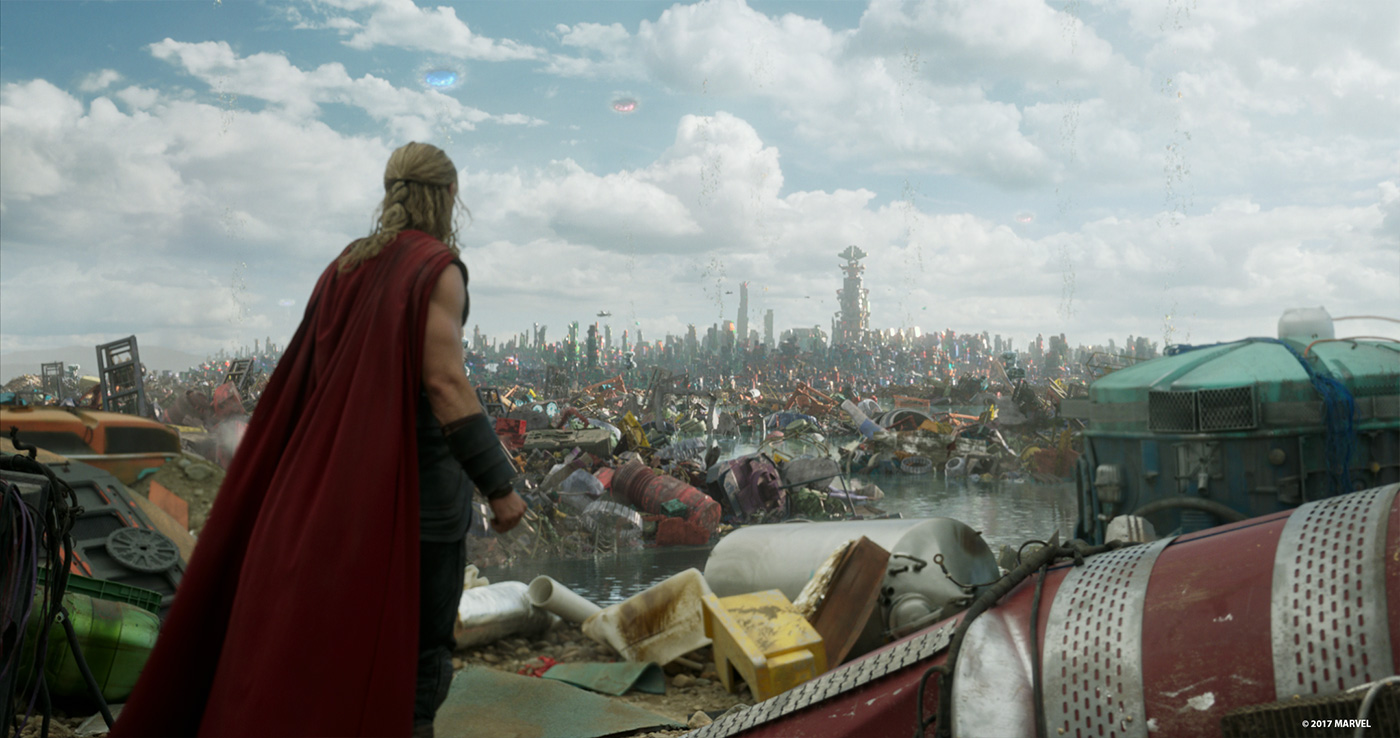
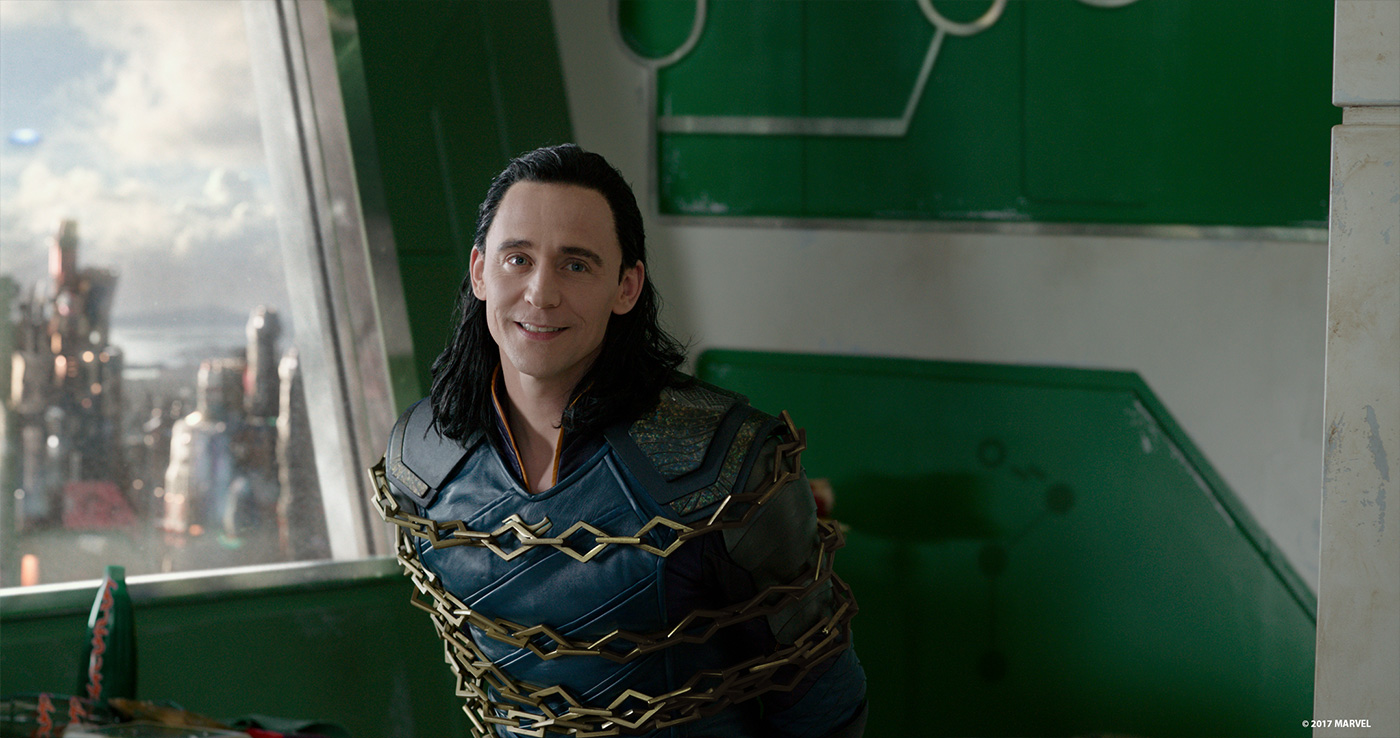



it would be better if he shared the bulk of software they used. Or some workflow/pipeline story too.